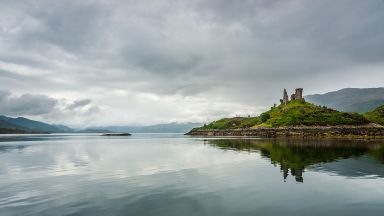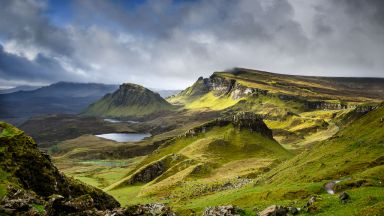Isle of Skye: The Complete Guide
The largest of the Inner Hebrides, it’s home to some of Scotland’s most iconic landscapes. The island’s peninsulas radiate from a mountainous hub dominated by the Cuillin, the rocky slopes of which provide some of the most dramatic mountain scenery in the country.
History of the Isle of Skye
The island has been occupied since the Mesolithic period, and over its history has been occupied at various times by Celtic tribes including the Picts and the Gaels, Scandinavian Vikings, and most notably the powerful integrated Norse-Gaels clans of MacLeod and MacDonald. The island was considered to be under Norwegian suzerainty until the 1266 Treaty of Perth, which transferred control over to Scotland. The 18th-century Jacobite risings led to the breaking-up of the clan system and later clearances that replaced entire communities with sheep farms, some of which involved forced emigrations to distant lands. Resident numbers declined from over 20,000 in the early 19th century to just under 9,000 by the closing decade of the 20th century. Skye’s population increased by 4% between 1991 and 2001. About a third of the residents were Gaelic speakers in 2001, and although their numbers are in decline, this aspect of island culture remains important.
Visiting Isle of Skye for the first time and wondering what are the top places to see in the city? In this complete guide, I share the best things to do in Isle of Skye on the first visit. Top help you plan your trip, I have also included an interactive map and practical tips for visiting!
This website uses affiliate links which earn a small commission at no additional cost to you.
21 Best places to See in Isle of Skye
This complete guide to Isle of Skye not only tells you about the very best sights and tourist attractions for first-time visitors to the city but also provide insights into a few of our personal favorite things to do.
This is a practical guide to visiting the best places to see in Isle of Skye and is filled with tips and info that should answer all your questions!
Sligachan Old Bridge

Visiting Sligachan Old Bridge
Fairy Pools of Skye

Location: Fairy Pools, Glenbrittle, Isle of Skye, UK | Hours: 24 Hour | Distance: 3.70km
Visiting Fairy Pools of Skye
Portree

Visiting Portree
Dunscaith Castle

Location: Sleat Peninsula, Tokavaig, Isle of Skye, Western Isles, Scotland | Hours: 24 Hours | Price: Free | Distance: 21.00km
Visiting Dunscaith Castle
Old Man of Storr

Visiting Old Man of Storr
Caisteal Chamuis (Knock Castle)

Visiting Caisteal Chamuis (Knock Castle)
Armadale Castle, Gardens & Museum of the Isles

| Hours: Gardens open Wednesday – Sunday, 9.30 – 5.30, to end October. Last entrance 5pm. | Price: Adult: £8.00 Concessions: £7.00 (60 and over, students with student card, disabled people) Child under 5: Free Child 5-15: £5.00 | Website | Distance: 29.50km
Visiting Armadale Castle, Gardens & Museum of the Isles
Dunvegan Castle and Gardens

| Hours: 10am-5.30pm Easter–mid-Oct | Price: adult/child £14/9 | Website | Distance: 29.70km
Visiting Dunvegan Castle and Gardens
Caisteal Maol

Visiting Caisteal Maol
Caisteal Uisdean

| Hours: 24 Hours | Distance: 31.00km
Visiting Caisteal Uisdean
Lealt Gorge and Waterfall

Location: Lealt Falls 12 Stormy Hill Portree IV51 9DY United Kingdom | Distance: 32.60km
Visiting Lealt Gorge and Waterfall
Brothers’ Point

Visiting Brothers’ Point
The Fairy Glen of Skye

Visiting The Fairy Glen of Skye
Claigan Coral Beach

Visiting Claigan Coral Beach
Kilt Rock & Mealt Falls

Location: Kilt Rock, Portree, UK | Hours: 24 Hours | Distance: 37.60km
Visiting Kilt Rock & Mealt Falls
Staffin Dinosaur Museum

Location: Ellishadder Staffin IV51 9JE | Hours: April - October10:00am-5:00pm 7 days a week | Price: Adults: £4 Children: £2 Family Ticket: £10 | Website | Distance: 37.70km
Visiting Staffin Dinosaur Museum
Neist Point Light House

Visiting Neist Point Light House
Quiraing

Visiting Quiraing
Skye Museum of Island Life

Location: Kilmuir, By Uig, Isle Of Skye, IV51 9UE | Website | Distance: 44.00km
Visiting Skye Museum of Island Life
Flora MacDonald Grave and Monument

Visiting Flora MacDonald Grave and Monument
Duntulm Castle

Visiting Duntulm Castle

